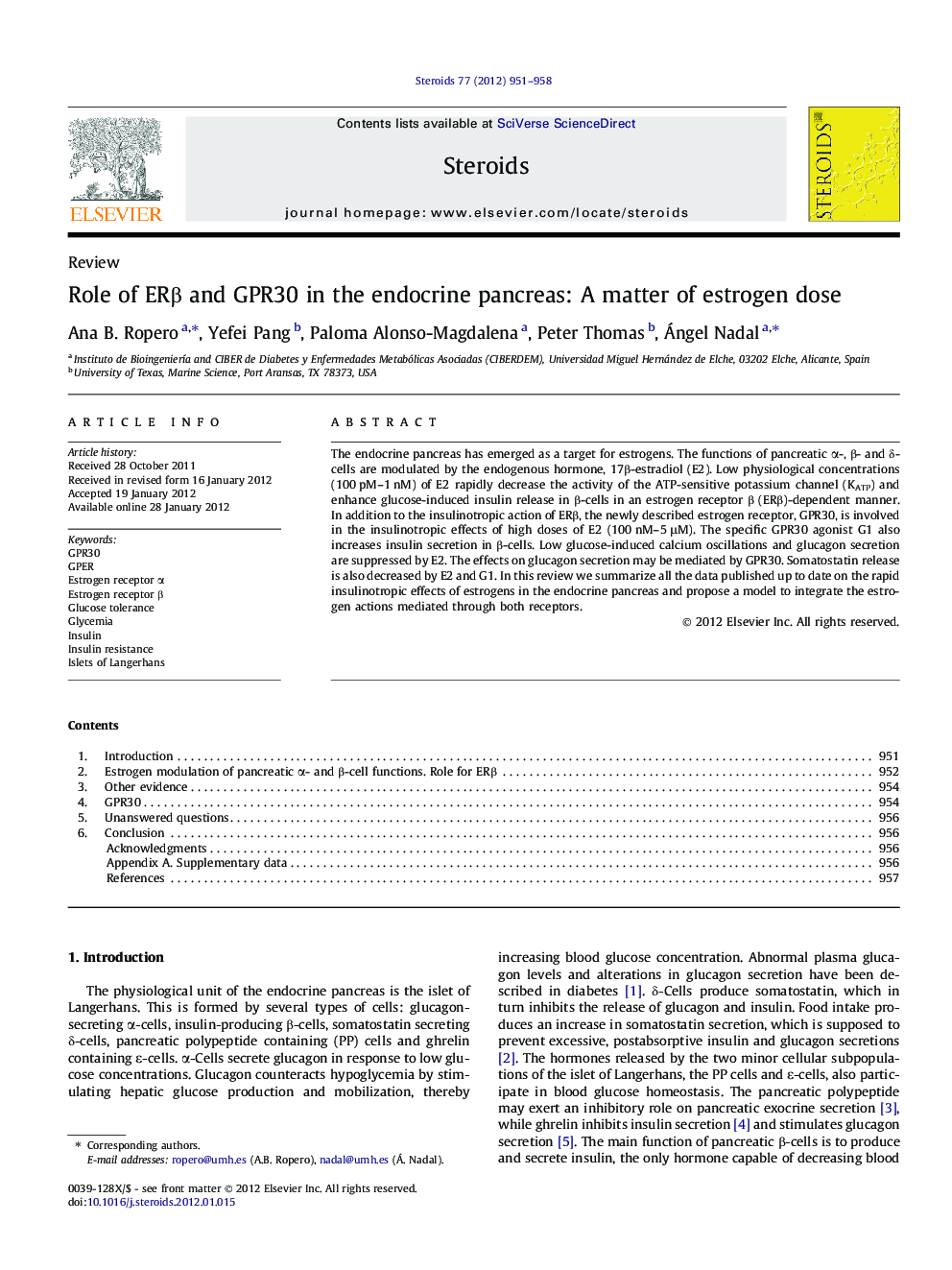| Article ID | Journal | Published Year | Pages | File Type |
|---|---|---|---|---|
| 2028332 | Steroids | 2012 | 8 Pages |
The endocrine pancreas has emerged as a target for estrogens. The functions of pancreatic α-, β- and δ-cells are modulated by the endogenous hormone, 17β-estradiol (E2). Low physiological concentrations (100 pM–1 nM) of E2 rapidly decrease the activity of the ATP-sensitive potassium channel (KATP) and enhance glucose-induced insulin release in β-cells in an estrogen receptor β (ERβ)-dependent manner. In addition to the insulinotropic action of ERβ, the newly described estrogen receptor, GPR30, is involved in the insulinotropic effects of high doses of E2 (100 nM–5 μM). The specific GPR30 agonist G1 also increases insulin secretion in β-cells. Low glucose-induced calcium oscillations and glucagon secretion are suppressed by E2. The effects on glucagon secretion may be mediated by GPR30. Somatostatin release is also decreased by E2 and G1. In this review we summarize all the data published up to date on the rapid insulinotropic effects of estrogens in the endocrine pancreas and propose a model to integrate the estrogen actions mediated through both receptors.
► The functions of pancreatic cells are modulated by 17β-estradiol. ► The insulinotropic effect of physiological doses of estradiol is mediated by ERβ. ► GPR30 is involved in the insulinotropic effects of high doses of the estrogen. ► The effects of estradiol on glucagon secretion may be mediated by GPR30.
